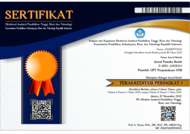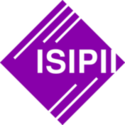Author Guidelines
Please read the Jurnal Pustaka Ilmiah guidelines and follow these instructions carefully. Manuscripts not adhering to the instructions will be returned for revision without review. The Chief Editor reserves the right to return manuscripts that are not prepared in accordance with these guidelines.
(Revised: June 2022)
Jurnal Pustaka Ilmiah covers research in the fields of library management, organization of information, information services, digital library and repositories, IT, media and information literacy, knowledge management, information and media preservation. documentation system, archive management and informetrics (scholarly communication). Jurnal Pustaka Ilmiah accepts writings in the form of research result and literature review.
ARTICLE TEMPLATE
Article template can be downloaded from here
THE SUBMISSION STAGE
All articles submitted to journal Jurnal Pustaka Ilmiah, Full text should be written in good English or Bahasa Indonesia (Indonesian). The paper should be submitted by the author via online submission.
MANUSCRIPT FORMAT
- The manuscript is written in 11 point Times New Roman font 1.5 space in the A4 paper. Use normal margins.
- The following word processor file formats are acceptable for the main manuscript document for all: Microsoft Word (DOC, DOCX) and Rich text format (RTF) with size not more than 8MB.
- The following formats for figure files: Please make sure that artwork files are in an acceptable format (TIFF, EPS or MS Office files) and with the correct resolution. Ensure that each illustration has a caption. Supply captions separately, not attached to the figure. A caption should comprise a brief title (not on the figure itself) and a description of the illustration. Keep text in the illustrations themselves to a minimum but explain all symbols and abbreviations used. Multiple figures can be expressed as one figure (for e.g. 1a, 1b, 1c etc...), while retaining the maximum limit of 6.
- The text should be in single-column format. Keep the layout of the text as simple as possible. Most formatting codes will be removed and replaced on processing the article.
- Page numbers are located at the right top.
- Figures and Tables are placed in the manuscript (integrated with a whole manuscript).
Manuscript sections are written in this order:
- TITLE/JUDUL
- ABSTRACT & KEYWORDS/ABSTRAK & KATA KUNCI
- INTRODUCTION/PENDAHULUAN
- METHODS/METODE
- RESULT AND DISCUSSION/HASIL DAN PEMBAHASAN
- CONCLUSION/KESIMPULAN
- ACKNOWLEDGEMENT (IF ANY)/UCAPAN TERIMA KASIH (JIKA ADA)
- REFERENCES/DAFTAR PUSTAKA
TITLE
The title should be informative and be written both briefly and clearly. It cannot diverse multi-interpretations. It has to be pinpoint with the issues that will be discussed. The beginning word is written in capital case and symmetrically. The article title does not contain any uncommon abbreviation. The article title should be written within five to fifteen words.
ABSTRACT
A concise and factual abstract is required. Each paper should be provided with an abstract of about 100-250 words. The abstract must contain (shortly and consecutively) a general background, should state briefly the purpose of the research, the principal results and major conclusions. An abstract is often presented separately from the article, so it must be able to stand alone. The abstract must be integrated and independent which is consist of introduction and purpose, methods, results, conclusion, and suggestion. However, the abstract should be written as a single paragraph without these headers. For this reason, References should be avoided. Also, non-standard or uncommon abbreviations should be avoided, but if essential they must be defined at their first mention in the abstract itself.
KEYWORDS
Keywords are the labels of your manuscript and critical to correct indexing and searching. Keywords should not more than 5 words or phrases in alphabetical order which has not been used in the title. Therefore, the keywords should represent the content and highlight of your article. Use only those abbreviations that are firmly established in the field. e.g. IFLA; OPAC; RFID; RDA.
INTRODUCTION
The introduction must contain (shortly and consecutively) a general background and a literature review (state of the art) contains a systematic description of previous studies relevant to the research, statements of the brand-new scientific article, main research problems, and the hypothesis. This section also contains theoretical basis, basic concepts and principles required for problem solving related to the research. In the last part of the introduction, the purpose of the article writing should be stated.
METHODS
The method is implemented to solve problems, including analytic methods. The methods used in the problem solving of the research are explained in this part.
RESULT AND DISCUSSION
Result and discussion must be written in the same part. They should be presented continuously start from the main result to the supporting results and equipped with a discussion. This section must show the acuity of the analysis and synthesis carried out critically including a description of the findings of the work that discusses incisive, answers of the research hypothesis, its relation to previous concepts or theories, compares them critically with the work of others, and corroborates or corrects to the previous findings. Unit of measurement used should follow the prevailing international system. All figures and tables should be active and editable by an editor. The discussion should explore the significance of the results of the work. Please highlight differences between your results or findings and the previous publications by other researchers.
CONCLUSION
The conclusion must be explained clearly, only answer the objectives or hypothesis of the research. The conclusions should not contain only the repetition of the results and discussions. Suggestion placed after conclusion contains a recommendation on the research done or an input that can be used directly by the consumer. Conclusions and suggestions should be written less than 200 words and should be written in a paragraph.
ACKNOWLEDGEMENT [if any]
Recognize those who helped in the research, especially funding supporter of your research. Name the person to help you work.
REFERENCES
We encourage the manuscript to cite at least 15 references with the ratio of primary references to other references must be >80% in order to improve the quality of thoughts and ideas that were used as a writing framework. The primary reference is the result of direct research, including articles in scientific journals, proceedings, dissertations, theses, and monographs. Reference must be up to date with the proportion >80% is the last 10 years. Classical works can be referred but not to compare the discussion or not to prove originality. Avoid reference to self-citation that is too much. Please ensure that every reference cited in the text is also present in the reference list (and vice versa). All references mentioned must be written in the order of references arranged from A to Z. Reading material cited in the body of the manuscript must be in the bibliography. The bibliography writing format refers to the American Psychological Association (APA). It is recommended that you write citations and bibliography using the Mendeley, Zotero, or EndNote reference manager tools.
Citation in the text:
Effects/responses are important elements in the mass communication process consisting of three main types of effects according to (Baran & Davis, 2012).
Behavioral effects are effects that can be observed, including patterns of actions, activities, or behavior habits (Rakhmat, 2018)
Example:
Journal Article
Lowrie, T., & Diezmann, C. M. (2009). National numeracy tests: A graphic tells a thousand words. Australian Journal of Education, 53(2), 141-158.
Osman, M. (2010). Controlling uncertainty: A review of human behavior in complex dynamic environments. Psychological Bulletin, 136(1), 65-86. https://doi.org/10.1037/a0017815
Book
Baran, S. J., & Davis, D. K. (2012). Mass communication theory: Foundations, ferment, and future (6th ed.). Wadsworth Cengage Learning
Rakhmat, J. (2018). Psikologi komunikasi: Edisi Revisi. Simbiosa Rekatama Media.
Theses or dissertations
Rahman, M. (2013). Using authentic materials in the writing classes: Tertiary level scenario. (Unpublished master's thesis). BRAC University, Mohakhali, Dhaka, Bangladesh.
Sheehan, L. R. (2007). Destination management organizations: A stakeholder perspective (Doctoral dissertation). Retrieved from Proquest Digital Dissertations. (AAT NR25719)
Webpage
Queensland Health. (2017). Sun safety and physical activity [Fact sheet]. Retrieved June 28, 2022 from http://conditions.health.qld.gov.au/HealthCondition/media/pdf/20/199/134/sun-safety-and-physical-activity-v4
Author Fees
This journal charges the following author fees.
Article Publication: 300000.00 (IDR)
IDR 300.000 - for Indonesian authors | USD 30 - for authors from abroad
If this paper is accepted for publication, you will be asked to pay an Article Publication Fee to cover publications costs. This fee is effective from the publication of the June 2025 issue.
The fee is sent to JPI account:
Bank Mandiri
Novi Tri Astuti
Account number 1380018033444
Mandiri cabang KCP Solo UNS
Switch Code BMRIIDJA
Please confirm and send proof of transfer to jurnal.pustaka.ilmiah@mail.uns.ac.id with subject: "Journal Fee - Article Title" to ease verification.
If you do not have funds to pay such fees, you will have an opportunity to waive each fee. We do not want fees to prevent the publication of worthy work.




.png)
.png)









1.jpg)
